SCM - Introduction
Supply Chain Management can be defined as the management of flow of products and services, which begins from the origin of products and ends at the product’s consumption. It also comprises movement and storage of raw materials that are involved in work in progress, inventory and fully furnished goods.
The main objective of supply chain management is to monitor and relate production, distribution, and shipment of products and services. This can be done by companies with a very good and tight hold over internal inventories, production, distribution, internal productions and sales.

In the above figure, we can see the flow of goods, services and information from the producer to the consumer. The picture depicts the movement of a product from the producer to the manufacturer, who forwards it to the distributor for shipment. The distributor in turn ships it to the wholesaler or retailer, who further distributes the products to various shops from where the customers can easily get the product.
Supply chain management basically merges the supply and demand management. It uses different strategies and approaches to view the entire chain and work efficiently at each and every step involved in the chain. Every unit that participates in the process must aim to minimize the costs and help the companies to improve their long term performance, while also creating value for its stakeholders and customers. This process can also minimize the rates by eradicating the unnecessary expenses, movements and handling.
Here we need to note that supply chain management and supply chain event management are two different topics to consider. The Supply Chain Event Management considers the factors that may interrupt the flow of an effective supply chain; possible scenarios are considered and accordingly, solutions are devised for them.
Supply Chain Management - Advantages
In this era of globalization where companies compete to provide the best quality products to the customers and satisfy all their demands, supply chain management plays a very important role. All the companies are highly dependent on effective supply chain process.
Let’s take a look at the major advantages of supply chain. The key benefits of supply chain management are as follows −
- Develops better customer relationship and service.
- Creates better delivery mechanisms for products and services in demand with minimum delay.
- Improvises productivity and business functions.
- Minimizes warehouse and transportation costs.
- Minimizes direct and indirect costs.
- Assists in achieving shipping of right products to the right place at the right time.
- Enhances inventory management, supporting the successful execution of just-in-time stock models.
- Assists companies in adapting to the challenges of globalization, economic upheaval, expanding consumer expectations, and related differences.
- Assists companies in minimizing waste, driving out costs, and achieving efficiencies throughout the supply chain process.
These were some of the major advantages of supply chain management. After taking a quick glance at the concept and advantages on supply chain management, let us take a look at the main goals of this management.
Supply Chain Management - Goals
Every firm strives to match supply with demand in a timely fashion with the most efficient use of resources. Here are some of the important goals of supply chain management −
- Supply chain partners work collaboratively at different levels to maximize resource productivity, construct standardized processes, remove duplicate efforts and minimize inventory levels.
- Minimization of supply chain expenses is very essential, especially when there are economic uncertainties in companies regarding their wish to conserve capital.
- Cost efficient and cheap products are necessary, but supply chain managers need to concentrate on value creation for their customers.
- Exceeding the customers’ expectations on a regular basis is the best way to satisfy them.
- Increased expectations of clients for higher product variety, customized goods, off-season availability of inventory and rapid fulfillment at a cost comparable to in-store offerings should be matched.
- To meet consumer expectations, merchants need to leverage inventory as a shared resource and utilize the distributed order management technology to complete orders from the optimal node in the supply chain.
Lastly, supply chain management aims at contributing to the financial success of an enterprise. In addition to all the points highlighted above, it aims at leading enterprises using the supply chain to improve differentiation, increase sales, and penetrate new markets. The objective is to drive competitive benefit and shareholder value.
SCM - Process
Supply chain management is a process used by companies to ensure that their supply chain is efficient and cost-effective. A supply chain is the collection of steps that a company takes to transform raw materials into a final product. The five basic components of supply chain management are discussed below −
Plan
The initial stage of the supply chain process is the planning stage. We need to develop a plan or strategy in order to address how the products and services will satisfy the demands and necessities of the customers. In this stage, the planning should mainly focus on designing a strategy that yields maximum profit.
For managing all the resources required for designing products and providing services, a strategy has to be designed by the companies. Supply chain management mainly focuses on planning and developing a set of metrics.
Develop(Source)
After planning, the next step involves developing or sourcing. In this stage, we mainly concentrate on building a strong relationship with suppliers of the raw materials required for production. This involves not only identifying dependable suppliers but also determining different planning methods for shipping, delivery, and payment of the product.
Companies need to select suppliers to deliver the items and services they require to develop their product. So in this stage, the supply chain managers need to construct a set of pricing, delivery and payment processes with suppliers and also create the metrics for controlling and improving the relationships.
Finally, the supply chain managers can combine all these processes for handling their goods and services inventory. This handling comprises receiving and examining shipments, transferring them to the manufacturing facilities and authorizing supplier payments.
Make
The third step in the supply chain management process is the manufacturing or making of products that were demanded by the customer. In this stage, the products are designed, produced, tested, packaged, and synchronized for delivery.
Here, the task of the supply chain manager is to schedule all the activities required for manufacturing, testing, packaging and preparation for delivery. This stage is considered as the most metric-intensive unit of the supply chain, where firms can gauge the quality levels, production output and worker productivity.
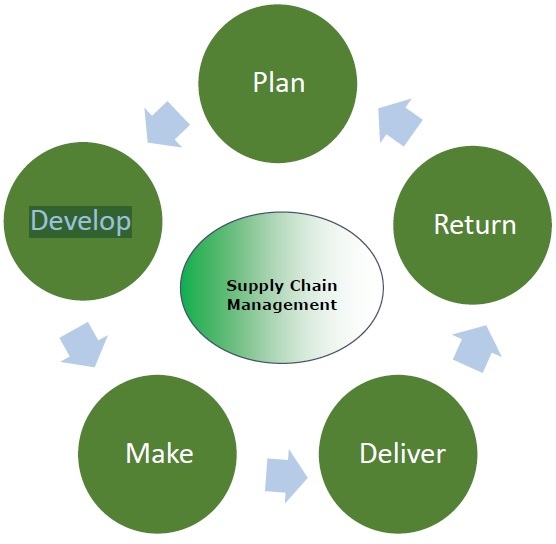
Deliver
The fourth stage is the delivery stage. Here the products are delivered to the customer at the destined location by the supplier. This stage is basically the logistics phase, where customer orders are accepted and delivery of the goods is planned. The delivery stage is often referred as logistics, where firms collaborate for the receipt of orders from customers, establish a network of warehouses, pick carriers to deliver products to customers and set up an invoicing system to receive payments.
Return
The last and final stage of supply chain management is referred as the return. In the stage, defective or damaged goods are returned to the supplier by the customer. Here, the companies need to deal with customer queries and respond to their complaints etc.
This stage often tends to be a problematic section of the supply chain for many companies. The planners of supply chain need to discover a responsive and flexible network for accepting damaged, defective and extra products back from their customers and facilitating the return process for customers who have issues with delivered products.
SCM - Process Flow
Supply chain management can be defined as a systematic flow of materials, goods, and related information among suppliers, companies, retailers, and consumers.
Types
There are three different types of flow in supply chain management −
- Material flow
- Information/Data flow
- Money flow
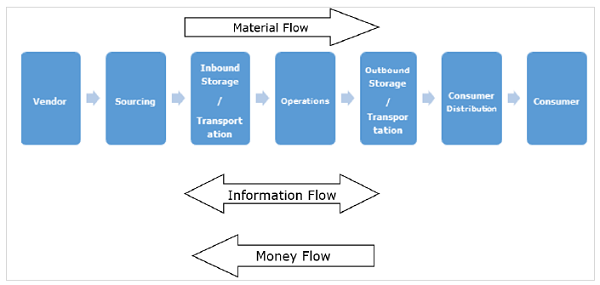
Let us consider each of these flows in detail and also see how effectively they are applicable to Indian companies.
Material Flow
Material flow includes a smooth flow of an item from the producer to the consumer. This is possible through various warehouses among distributors, dealers and retailers.
The main challenge we face is in ensuring that the material flows as inventory quickly without any stoppage through different points in the chain. The quicker it moves, the better it is for the enterprise, as it minimizes the cash cycle.
The item can also flow from the consumer to the producer for any kind of repairs, or exchange for an end of life material. Finally, completed goods flow from customers to their consumers through different agencies. A process known as 3PL is in place in this scenario. There is also an internal flow within the customer company.
Information Flow
Information/data flow comprises the request for quotation, purchase order, monthly schedules, engineering change requests, quality complaints and reports on supplier performance from customer side to the supplier.
From the producer’s side to the consumer’s side, the information flow consists of the presentation of the company, offer, confirmation of purchase order, reports on action taken on deviation, dispatch details, report on inventory, invoices, etc.
For a successful supply chain, regular interaction is necessary between the producer and the consumer. In many instances, we can see that other partners like distributors, dealers, retailers, logistic service providers participate in the information network.
In addition to this, several departments at the producer and consumer side are also a part of the information loop. Here we need to note that the internal information flow with the customer for in-house manufacture is different.
Money Flow
On the basis of the invoice raised by the producer, the clients examine the order for correctness. If the claims are correct, money flows from the clients to the respective producer. Flow of money is also observed from the producer side to the clients in the form of debit notes.
In short, to achieve an efficient and effective supply chain, it is essential to manage all three flows properly with minimal efforts. It is a difficult task for a supply chain manager to identify which information is critical for decision-making. Therefore, he or she would prefer to have the visibility of all flows on the click of a button.
SCM - Flow Components
After understanding the basic flows involved in the supply chain management, we need to consider the different elements present in this flow. Thus, the different components of the flow of supply chain are described below.
Transportation
Transportation or shipment is necessary for an uninterrupted and seamless supply. The factors that have an impact on shipment are economic uncertainty and instability, varying fuel prices, customers’ expectations, globalization, improvised technologies, changing transportation industry and labor laws.

The major elements that influence transportation should be considered, as it is completely dependent on these factors for order completion as well as for ensuring that all the flows work properly. The major factors are −
Long-term Decisions
Transportation managers should acknowledge the supply freight flow and accordingly design the network layout. Now, when we say long term decision, we mean that the transportation manager has to select what should be the primary mode of transportation.
The manager has to understand the product flows, volume, frequency, seasonality, physical features of products and special handlings necessities, if any. In addition to this, the manager has to make decisions as to the extent of outsourcing to be done for each and every product. While considering all these factors, he should carefully consider the fact that the networks need not be constant.
For example, in order to transport stock to regional cross dock facilities for sorting, packaging and brokering small loads to individual customers, stock destinations can be assembled through contract transportation providers.
Lane Operation Decisions
These functional decisions stress on daily freight operations. Here, the transportation managers work on real time information on products’ requirements at different system nodes and must collaborate every move of the product that is both inbound and outbound shipping lanes so as to satisfy their services demands at the minimal possible cost.
Managers who make good decisions easily handle information and utilize the opportunities for their own profit and assure that the product is moved to them immediately, whenever it is demanded, that too in the right quantity. At the same time, they are saving cost on transportation also.
For example, a shipment has landed from a supplier who is based in New Jersey and in the same week, a product needs to be dispatched to New York as it becomes available for movement. If the manager is aware of this information in advance, he would prepare everything as per the demand and the products could be shipped out immediately.
Choice and Mode of Carrier
A very important decision to be made is to choose the mode of transportation. With the improvement in the means of transportation, modes of transport that were not available in the traditional transportation modes in the past can be now be a preferred choice.
For example, rail container service may offer a package that is cost-efficient and effective as compared to a motor transport. While making a decision, the manager has to consider the service criteria that need to be met, like the delivery time, date special handling requirements, while also taking into consideration the element of cost, which would be an important factor.
Dock Level Operations
This involves the last level of decision-making. This comprises planning, routing and scheduling. For example, if a carriage is being loaded with different customers’ orders, the function of the dock-level managers is to assure that the driver is informed of the most efficient route and that loads are placed in the order of the planned stops.
Warehousing
Warehousing plays a vital role in the supply chain process. In today’s industry, the demands and expectations of the customers are undergoing a tremendous change. We want everything at our door step – that too with efficient price. We can say that the management of warehousing functions demands a distinct merging of engineering, IT, human resources and supply chain skills.
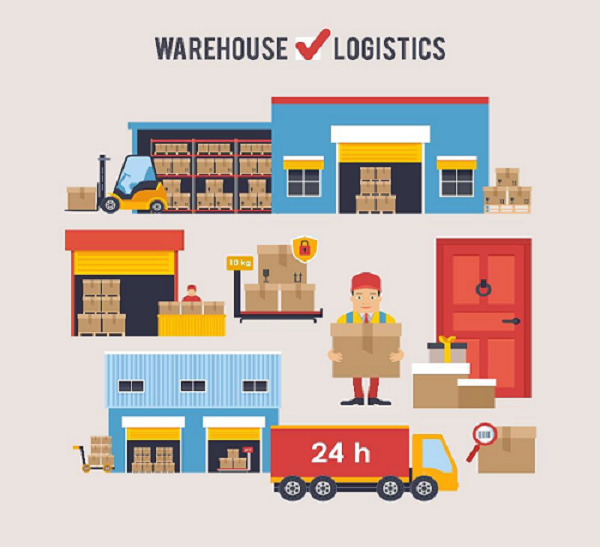
To neutralize the efficiency of inbound functions, it is ideal to accept materials in an immediately storable conveyance, like a pallet, case or box. For labeling the structure, tool selection and business process demand the types and quantities of orders that are processed. Further, the number of stock-keeping units (SKU’s) in the distribution centers is a crucial consideration.
The Warehouse Management Systems (WMS) leads the products to their storage location where they should be stored. The required functionality for the completion and optimization of receiving, storing and shipping functions is then supplied.
Sourcing and Procurement
Sourcing and procurement are a vital part of the supply chain management. The company decides if it wants to perform all the exercises internally or if it desires to get it done by any other independent firm. This is commonly referred as the make vs buy decision, which we will be discussing in brief in another chapter.
Returns Management
Returns management can be defined as the management that invites the merger of challenges and opportunities for inbound logistics. A cost-effective reverse logistics program links the available supply of returns with the product information and demand for repairable items or re-captured materials. We have three pillars that support returns management processes. These are as follows −
- Speed − It is a must to have quick and easy returns management and automate decisions regarding whether to produce return material authorizations (RMAs) and if so, how to process them. Basically, the tools of speed return processing include automated workflows, labels & attachments and user profiles.
- Visibility − For improving the visibility and predictability, information needs to be captured initially in the process, ideally prior to delivering the return to the receiving dock. Most effective and easily implementable approaches for obtaining visibility are web-based portals, carrier integration and bar-coded identifiers.
- Control − In case of returns management, synchronizing material movements is a common issue that needs to be handled. The producers need to be very cautious and pay close attention to receipts and reconciliation and update the stakeholders of impending quality issues. In this case, reconciliation activates visibility and control all over the enterprise. The key control points in this process are regulatory compliance, reconciliation and final disposition and quality assurance.
Software solutions can assist in speeding up the returns management by supporting user profiles and workflows that state supply chain partners and processes, by labeling and documentation that tracks the material along with the web-based portals and by exception-based reporting to deliver information for timely reconciliation. These characteristics, when executed with the three pillars mentioned above, support a reliable and predictable returns process to count value across the company.

Post - Sales Service
Now that the ordered shipment is over, what is the next step? The post sales service in supply chain tends to be an increasingly essential factor as businesses offer solution instead of products.
The post sales services comprise selling spare parts, installing upgrades, performing inspection, maintenance and repairs, offering training & education and consulting.
Presently, with the growing demands of the clients, a high volume of after sales service proves to be a profitable business. Here, the services are basically heterogeneous and the value-added services are different from those provided prior to sales service.
SCM - Decision Phases
Decision phases can be defined as the different stages involved in supply chain management for taking an action or decision related to some product or services. Successful supply chain management requires decisions on the flow of information, product, and funds that fall into three decision phases.
Here we will be discussing the three main decision phases involved in the entire process of supply chain. The three phases are described below −
Supply Chain Strategy
In this phase, decision is taken by the management mostly. The decision to be made considers the sections like long term prediction and involves price of goods that are very expensive if it goes wrong. It is very important to study the market conditions at this stage.
These decisions consider the prevailing and future conditions of the market. They comprise the structural layout of supply chain. After the layout is prepared, the tasks and duties of each is laid out.
All the strategic decisions are taken by the higher authority or the senior management. These decisions include deciding manufacturing the material, factory location, which should be easy for transporters to load material and to dispatch at their mentioned location, location of warehouses for storage of completed product or goods and many more.
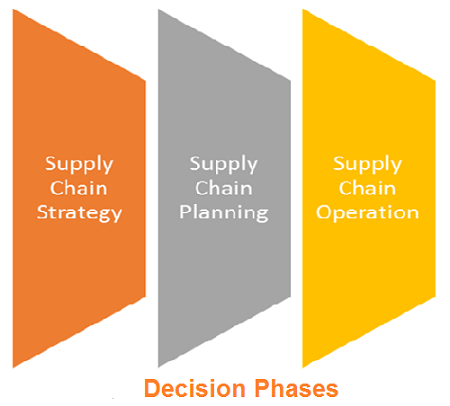
Supply Chain Planning
Supply chain planning should be done according to the demand and supply view. In order to understand customers’ demands, a market research should be done. The second thing to consider is awareness and updated information about the competitors and strategies used by them to satisfy their customer demands and requirements. As we know, different markets have different demands and should be dealt with a different approach.
This phase includes it all, starting from predicting the market demand to which market will be provided the finished goods to which plant is planned in this stage. All the participants or employees involved with the company should make efforts to make the entire process as flexible as they can. A supply chain design phase is considered successful if it performs well in short-term planning.
Supply Chain Operations
The third and last decision phase consists of the various functional decisions that are to be made instantly within minutes, hours or days. The objective behind this decisional phase is minimizing uncertainty and performance optimization. Starting from handling the customer order to supplying the customer with that product, everything is included in this phase.
For example, imagine a customer demanding an item manufactured by your company. Initially, the marketing department is responsible for taking the order and forwarding it to production department and inventory department. The production department then responds to the customer demand by sending the demanded item to the warehouse through a proper medium and the distributor sends it to the customer within a time frame. All the departments engaged in this process need to work with an aim of improving the performance and minimizing uncertainty.
SCM - Performance Measures
Supply chain performance measure can be defined as an approach to judge the performance of supply chain system. Supply chain performance measures can broadly be classified into two categories −
- Qualitative measures − For example, customer satisfaction and product quality.
- Quantitative measures − For example, order-to-delivery lead time, supply chain response time, flexibility, resource utilization, delivery performance.
Here, we will be considering the quantitative performance measures only. The performance of a supply chain can be improvised by using a multi-dimensional strategy, which addresses how the company needs to provide services to diverse customer demands.
Quantitative Measures
Mostly the measures taken for measuring the performance may be somewhat similar to each other, but the objective behind each segment is very different from the other.
Quantitative measures is the assessments used to measure the performance, and compare or track the performance or products. We can further divide the quantitative measures of supply chain performance into two types. They are −
- Non-financial measures
- Financial measures
Non - Financials Measures
The metrics of non-financial measures comprise cycle time, customer service level, inventory levels, resource utilization ability to perform, flexibility, and quality. In this section, we will discuss the first four dimensions of the metrics −
Cycle Time
Cycle time is often called the lead time. It can be simply defined as the end-to-end delay in a business process. For supply chains, cycle time can be defined as the business processes of interest, supply chain process and the order-to-delivery process. In the cycle time, we should learn about two types of lead times. They are as follows −
- Supply chain lead time
- Order-to-delivery lead time
The order-to-delivery lead time can be defined as the time of delay in the middle of the placement of order by a customer and the delivery of products to the customer. In case the item is in stock, it would be similar to the distribution lead time and order management time. If the ordered item needs to be produced, it would be the summation of supplier lead time, manufacturing lead time, distribution lead time and order management time.
The supply chain process lead time can be defined as the time taken by the supply chain to transform the raw materials into final products along with the time required to reach the products to the customer’s destination address.
Hence it comprises supplier lead time, manufacturing lead time, distribution lead time and the logistics lead time for transport of raw materials from suppliers to plants and for shipment of semi-finished/finished products in and out of intermediate storage points.
Lead time in supply chains is governed by the halts in the interface because of the interfaces between suppliers and manufacturing plants, between plants and warehouses, between distributors and retailers and many more.
Lead time compression is a crucial topic to discuss due to the time based competition and the collaboration of lead time with inventory levels, costs, and customer service levels.
Customer Service Level
The customer service level in a supply chain is marked as an operation of multiple unique performance indices. Here we have three measures to gauge performance. They are as follows −
- Order fill rate − The order fill rate is the portion of customer demands that can be easily satisfied from the stock available. For this portion of customer demands, there is no need to consider the supplier lead time and the manufacturing lead time. The order fill rate could be with respect to a central warehouse or a field warehouse or stock at any level in the system.
- Stockout rate − It is the reverse of order fill rate and marks the portion of orders lost because of a stockout.
- Backorder level − This is yet another measure, which is the gauge of total number of orders waiting to be filled.
- Probability of on-time delivery − It is the portion of customer orders that are completed on-time, i.e., within the agreed-upon due date.
In order to maximize the customer service level, it is important to maximize order fill rate, minimize stockout rate, and minimize backorder levels.
Inventory Levels
As the inventory-carrying costs increase the total costs significantly, it is essential to carry sufficient inventory to meet the customer demands. In a supply chain system, inventories can be further divided into four categories.
- Raw materials
- Work-in-process, i.e., unfinished and semi-finished sections
- Finished goods inventory
- Spare parts
Every inventory is held for a different reason. It’s a must to maintain optimal levels of each type of inventory. Hence gauging the actual inventory levels will supply a better scenario of system efficiency.
Resource Utilization
In a supply chain network, huge variety of resources is used. These different types of resources available for different applications are mentioned below.
- Manufacturing resources − Include the machines, material handlers, tools, etc.
- Storage resources − Comprise warehouses, automated storage and retrieval systems.
- Logistics resources − Engage trucks, rail transport, air-cargo carriers, etc.
- Human resources − Consist of labor, scientific and technical personnel.
- Financial resources − Include working capital, stocks, etc.
In the resource utilization paradigm, the main motto is to utilize all the assets or resources efficiently in order to maximize customer service levels, reduce lead times and optimize inventory levels.
Finanacial Measures
The measures taken for gauging different fixed and operational costs related to a supply chain are considered the financial measures. Finally, the key objective to be achieved is to maximize the revenue by maintaining low supply chain costs.
There is a hike in prices because of the inventories, transportation, facilities, operations, technology, materials, and labor. Generally, the financial performance of a supply chain is assessed by considering the following items −
- Cost of raw materials.
- Revenue from goods sold.
- Activity-based costs like the material handling, manufacturing, assembling rates etc.
- Inventory holding costs.
- Transportation costs.
- Cost of expired perishable goods.
- Penalties for incorrectly filled or late orders delivered to customers.
- Credits for incorrectly filled or late deliveries from suppliers.
- Cost of goods returned by customers.
- Credits for goods returned to suppliers.
In short, we can say that the financial performance indices can be merged as one by using key modules such as activity based costing, inventory costing, transportation costing, and inter-company financial transactions.
SCM - Strategic Sourcing
Strategic sourcing can be defined as a collective and organized approach to supply chain management that defines the way information is gathered and used so that an organization can leverage its consolidated purchasing power to find the best possible values in the marketplace.
We cannot build up the significance of operating in a collaborative manner. Several decades have witnessed a major transformation in the profession of supply chain, from the purchasing agent comprehension, where staying in repository was the criterion, to emerging into a supply chain management surrounding, where working with cross functional and cross location teams is important, to achieve success.
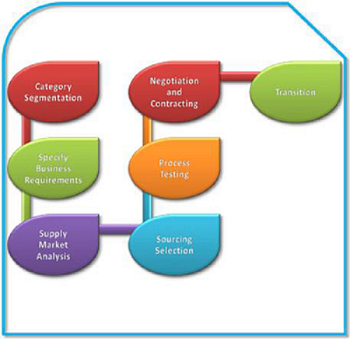
Strategic sourcing is organized because of the necessity of some methodology or process. It is collective because one of the most essential necessities for any successful strategic sourcing attempt is of receiving operational components, apart from the procurement, engaged in the decision-making and assessment process.
The process of strategic processing is a step by step approach. There are seven distinct steps engaged in the process of strategic processing. These steps are explained below in brief.
Understanding the Spend Category
The first three steps involved in the strategic sourcing are carried out by the sourcing team. In this first stage, the team needs to do a complete survey on the total expenditure. The team ensures that it acknowledges every aspect regarding the spend category itself.
The five major regions that are analyzed in the first stage are as follows −
- Complete previous expenditure records and volumes.
- Expenditures divided by items and sub items.
- Expenditures by division, department or user.
- Expenditures by the supplier.
- Future demand projections or budgets.
For example, if the classification is grooved packaging at a customer goods company, the team has to acknowledge the description of the classification, application patterns and the reason behind specification of particular types and grades specified.
Stakeholders at all functioning units and physical locations are to be determined. The logistics, for instance, needs an updated report regarding the transportation specifications and marketing requirements to acknowledge some quality or environmentally applicable features.
Supplier Market Assessment
The second step includes frequent assessment of the supplier market for pursuing substitute suppliers to present incumbents. A thorough study of the supplier marketplace dynamics and current trends is done. The major element of the key products design is should-cost. Along with it, an analysis on the major suppliers’ sub-tier marketplace and examination for any risks or new opportunities are also important.
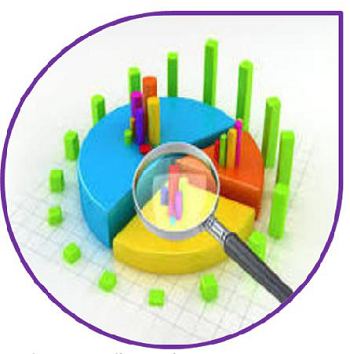
Now, it is not recommended to analyze the should-cost for every item. There are many instances where conservative strategic sourcing techniques tend to work better. But in the instances where the application of strategic sourcing is not applicable, the should-cost analysis supplies a valuable tool that drives minimizing of cost and regular progress efforts of the supplier.
Supplier Survey
The third step is developing a supplier analysis for both incumbent and potential substitute suppliers. This analysis assists in examining the skills and abilities of a supplier. In the meanwhile, data collected from incumbent suppliers is used for verifying spend information that suppliers have from their sales systems.

The survey team considers the above-mentioned areas for gathering information. The areas are as follows −
- Feasibility
- Capability
- Maturity
- Capacity
The analysis is done to examine the potential and skills of the market to satisfy the customer demands. This analysis helps in the examination done at the initial stage to find out if the proposed project is feasible and can be delivered by the identified supply base.
This analysis also supplies an initial caution of the customer demands to the market and enables suppliers to think about how they would react to and fulfill the demand. Here the motto is to motivate the appropriate suppliers with the right structural layout to respond to the demands.
Building the Strategy
The fourth step comprises constructing the sourcing strategy. The merger of the first three steps supports the necessary elements for the sourcing strategy. For every region or category, the strategy depends on answering the questions given below.
- How willing is the marketplace to oppose the supplier?
- How supportive are the clients of a firm for testing incumbent supplier relationships?
- What are the substitutes to the competitive assessment?
Generally, these substitutes are opted when a purchasing firm has little leverage over its supply base. They will depend on the belief that the suppliers will share the profits of a new strategy. Thus, we say that the sourcing strategy is an accumulation of all the drivers thus far mentioned.
RFx Request
Mostly, the competitive approach is applied in general cases. In this approach, a request for proposal or bid needs to be prepared (e.g., RFP, RFQ, eRFQ, ITT) for most spend classifications or groups.
This defines and clarifies all the needs for all prequalified suppliers. The request should comprise product or service specifications, delivery and service requirements, assessment criteria, pricing structure and financial terms and conditions.
In the fifth stage, an interaction plan needs to be executed to allure maximum supplier interest. It must be ensured that each and every supplier is aware that they are competing on a level playing field. After sending the RFP to all suppliers, it is to be confirmed that they are given enough time to respond. In order to motivate greater response, follow-up messages should also be sent.
Selection
This step is all about selecting and negotiating with suppliers. The sourcing team is advised to apply its assessment constraints to the responses generated by the suppliers.
If information across the limitation of RFP response is required, it can be simply asked for. If done correctly, the settlement process is conducted first with a larger set of suppliers and then shortlisted to a few finalists. If the sourcing team utilizes an electronic negotiation tool, large number of suppliers can sustain in the process for longer duration, giving more wide suppliers a better opportunity at winning the enterprise.
Communicaction With New Suppliers
After informing the winning supplier(s), they should be invited to take part in executing recommendations. The execution plans vary according to the scale of switches the supplier makes.
For obligatory purposes, a communication plan will be set up, including any modification in specifications and improvements in delivery, service or pricing models. These tend to be communicated to users as well.
As we know, the company gains immensely from this entire process of creating a communication plan, making some modifications according to the customer demand and further forwarding this to the customer. It’s essential that this process should be acknowledged by both the company and the supplier.
For new suppliers, we need to construct a communication plan that copes with the alteration from old to new at every point in the process engaged by the spend category. The sections that have an impact of this change are the department, finance and customer service.
In addition, the risk antennae will be particularly sensitive during this period. It is essential to gauge closely the new supplier’s performance during the first weeks of performance.
Another essential task is to grasp the intellectual capital of the sourcing team, which has been developed within the seven-step process, so that it can be used the next time that category is sourced.
SCM - Make Vs Buy
Production units are identified mostly with their decision to make or buy. In other words, do they wish to produce the desired product on their own or do they want to purchase it from the foreign market.
This decision is critical because the third-party suppliers especially in countries like Eastern Europe, China, and other low-cost parts of the world hold out the promise of essential beneficiaries, which the developed nations fail to offer.

However, the developed countries can easily overcome the expenses cost in the imported material through activities like human resources, information technology, maintenance and customer relations.
If properly utilized and taken care of, these activities may yield profit rather than leading the nation to suffer more loss. All the expense of outsourcing can be regained through these activities and thus they should not be neglected when the options are considered.
The Make Vs Buy decision of a nation depends on three pillars. These pillars are −
- Business strategy
- Risks
- Economic factors
Business Strategy
The first pillar in the Make Vs Buy decision is the business strategy adopted by a nation. Business strategy strategically engages the importance of the company whose product or service is being considered for outsourcing, in addition to the process, technologies or skills needed to design the product or deliver that particular service.
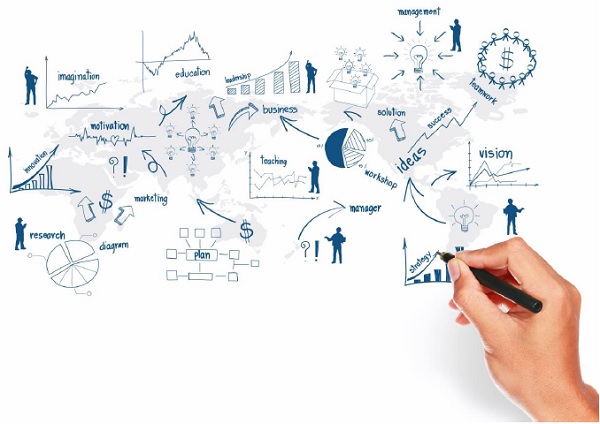
These factors should be carefully considered, not just on the basis of current competitive environment but also by anticipating the changing competitive environment in future.
So, as a rule, it’s advisable to select the in-house skills and abilities when a product or a function plays a very important role in improving the company’s performance or is considered a core operation.
Perhaps, if we consider a time-sensitive product or a product, which is prone to consequent design changes, third-party producing would likely be a mistake. In simple worlds, companies must opt for outsourcing in the following scenarios −
- Remove the processes, which are intensive on the balance sheet, e.g., capital or labor.
- Minimize the costs.
- Achieve flexibility for adjusting output in comeback to changing demand.
- Phase out management of paperwork, documents or training.
- Monitor fewer workers.
- Have access to new process or network tools and technologies.
- Leverage external expertise.
In fact, if a product relies on proprietary technology or intellectual property or if a product or an operation is critical for the company’s performance, it is recommended to select in-house skills & abilities rather than outsourcing.
Obviously, outsourcing is worth considering under some situations. If a product or function has essentially become a commodity or is derived from factors other than unique or differentiating capabilities and as such, moving production or management to a third party does not give rise to significant risk to the company’s strategy, outsourcing would be the perfect solution.
Risks
The second pillar under the Make Vs Buy strategy is risks involved with any decision. The major risk factors involved in making a product in the home country or purchasing it from foreign countries are quality, reliability, and predictability of outsourced solutions or services. Along with these, there are risks inherent in the process of labeling and selecting the right supplier and structuring a workable ongoing relationship.
When we have numerous suppliers, a single failure in the supply chain may not be deadly. Even when the suppliers are making parts of an item instead of that completely furnished item, there will be errors in manufacturing. These errors should be identified before the products are assembled so that the faulty item cannot be delivered to the consumer directly.

We know outsourcing opens up a broad array of new risks. We need to be attentive of any potential pitfalls with producers and examine outsourcing partners on the basis of their importance to the company.
Operations in outsourcing that lead to failure of service could be overwhelming, for example, an IT network, a payroll processing system or element manufacturing, as compared to risks or problems like a glitch in a training program or a long-term product development plan, which is much lesser.
It is very important to acknowledge the risks that are related to the location of an external supplier. Apart from judging the source country’s political stability, companies require to examine the safety and lead times of shipment schedule. Along with this, they have to label and examine potential secondary carriers or routes or search for other producers as a backup in a different area that supplies incremental volume during peaks in demand or disruptions of the primary source of supply.
When we merge the outsourced manufacturing of products or outsourced processes that demand distinct skills or assets, making it difficult or expensive to re-source, the supply chain management becomes a highly complex function. In fact, these risks through which a producer may exploit a customer’s highly reliable relationship by increasing prices or charging better terms (referred as hold up risks) can be easily handled with some external solutions.
This is a very important decision to make. One has to go through all the available options and select the best one out of them before making any commitments to the supplier because outsourcing agreements can be difficult to amend or break.
Economic Factors
The third pillar in the Make Vs Buy strategy is the economic factorsresiding in the country that needs to decide if to buy a product or make it on its own. The various economic factors comprise the effect of outsourcing on capital expenditures, return on invested capital and return on assets, along with the probable savings gained by outsourcing.
To study the importance of pricing mechanisms, let’s consider those companies that base their decision on if they need to outsource solely on approximate calculations of the in-house as compared to the external costs related to the outsourced function, for example, the cost of each item produced or the price of running an HR department or an IT network instead on the total costs. The net prices that need to be taken care of comprise the layouts for handling the outsource supplier, exclusively as the outsourced process changes. These changes prove to be very essential.
For example, customizing some software on a third-party information technology network can compute a large surcharge to the outsourcing deal. Tackling the customization in-house, i.e., within the home country, where the IT department can work closely, their work can be easily monitored and more productively with end-users to satisfy their demands can be obtained, tend to be less costly.
Along with this, the home country needs to choose the outsourcing partners very cautiously. In case the outsourcing partners are not selected properly, the companies often attempt to protect themselves from failures or delays by replicating in-house some of the effort that was originally farmed out. This leads to multiple prices for the same project and potential costs are mostly neglected when the outsourcing deal is made.
The costs that are often neglected in outsourcing manufacturing operations are as follows −
- Transportation and handling charges.
- Expanded, extended inventories.
- Administrative bills like the supplier management and quality control rates.
- Casted complexity and its effect on lean flows.
- Minimal return on invested capital.
- Production dependability and quality control.
Taking all these costs into consideration, depending on a one-time quote to measure the competitiveness of an external producer is mostly not enough. Enterprises can be saved from this mistake by factoring into the outsourcing equation the economic effects of comparative wage prices, labor productivity, tools and staff utilization, the biasness of both the labor base and functional processes, the potential for process and product innovation and relative purchasing power.
Finally, we can say that for a successful outsourcing relationship, the basic factors include the sharing of savings from productivity progress, so that both sides have an inducement to merge.
After establishing a sober formal relationship, it is very essential to search for the right balance between fully transparent supplier functions and micromanagement or the perception of it. After the outsourcing decisions are made and suppliers have been chosen, it is crucial to be on the same front on a fair and balanced pricing mechanism, productivity progress and cost minimization expectations and the necessary scale of responsiveness to design, service or delivery changes.
SCM - Networks
The network design in supply chain determines its physical arrangement, design, structural layout and infrastructure of the supply chain. Here the major decisions to be made are on the number, locations and size of manufacturing plants and warehouses and the assignment of retail outlets to warehouses, etc. This stage witnesses some other major sourcing decisions as well. The basic time duration for planning horizon is few years.
Many major decisions involving the long-term location, capacity, technology and supplier selection have to be made by considering the probable uncertainties present in the market development accompanied by changing economic and legal conditions.
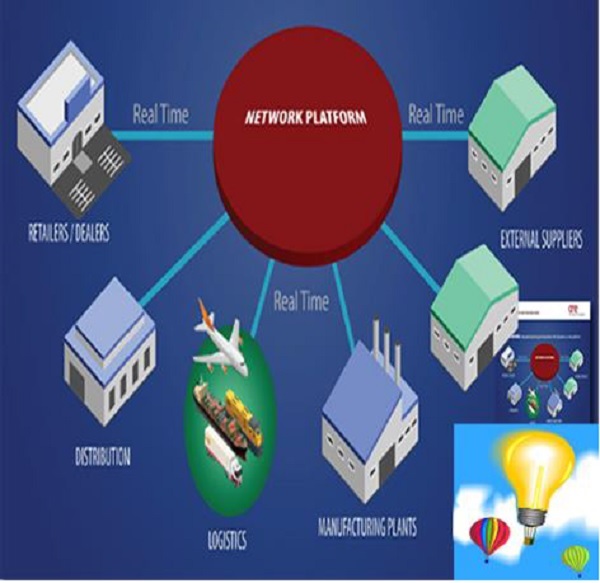
The network design in supply chain concentrates mainly on the development of multi-stage stochastic optimization methods required for decision support under demand, freight rate and exchange rate uncertainty. Here, we will discuss the various strategies to study the uncertainty and scenario modeling.
- Warehouse location − When companies expand their branches into various new locations, they need new storage places as well. Here the company faces a warehouse location problem. Within the set of probable choices in locations, the one that has minimal fixed costs and operational costs by fulfilling the required demand is chosen.
- Traffic network design − With the growing population, the traffic in cities is increasing. Because of the higher transportation demand, the traffic networks have also to be widened. Since the budget allotted is usually limited, the major issue is to determine which projects should be constructed to develop the flow inside a traffic network.
- Reshoring − This phenomenon has emerged recently because of the rising cost and other circumstances. It is the exercise of bringing outsourced products and services back to the source point from which they were originally shipped. It outlines the process of moving some or all producing back to its original source.
Networks Models
Supply chain networks present different types of models that help us understand the various optimization methods used for studying the uncertainty and scenario modeling. There are six distinct supply chain network models, as given below.
- Producer storage with direct shipping
- Producer storage with direct shipping and in-transit merge (cross docking)
- Distributor storage with package carrier delivery
- Distributor storage with last mile delivery
- Producer or distributor storage with costumer pickup
- Retail storage with customer pickup
The supply chain network basically deals with three major entities: Producer, Distributor and Merchant. Two different options are available, i.e., customer pickup or door delivery. For example, if the door delivery option is opted for, there is transport between producer and distributor, distributor and merchant and producer and merchant.
The distribution system decision is made on the basis of the choice of the customers. This in turn results in the demand for the product or products and cost of the distribution arrangement.
New companies may come to a halt through the application of a single type of distribution network. Mostly, companies go for merging of different types for distinct products, different customers and different usage situations, coming back to the different optimization models mentioned above. Now we will discuss each model in brief.
Producer storage with direct shipping
In this model, goods are moved directly from the manufacturer’s location as the starting point to the end customer’s location as the destination point bypassing the retailer. The retailer is the person who takes the order and initiates the delivery request. This option is also called drop-shipping, with product delivered directly from the manufacturer’s location to the customer’s destination.
Producer storage with direct shipping and in-transit merge
It is somewhat congruent to pure drop-shipping or moving, but the difference is that pieces of the order come from different locations and they are merged into one so that the customer gets a single delivery.
Distributor storage with package carrier delivery
This comes into action when the inventory is not owned by the manufacturers at the plants; instead it is owned by the merchants/retailers in intermediate warehouses and package carriers are used for shipment of goods from the intermediate location to the final customer.
Distributor storage with last mile delivery
This type results when the merchant/retailer delivers the goods ordered by the customer to the customer’s home instead of using a package carrier.
Producer/distributor storage with customer pickup
In this type, the inventory is stored at the warehouse owned by the manufacturer or producer but the customers place their orders online or through phone and then come to pick up points allotted for collecting their orders.
Retail storage with customer pickup
This is mostly applied on situations when inventory is locally stored at retail stores; customers walk into the retail shop or order something online or on the phone and pick it up at the retail store.
SCM - Inventory Management
As seen under the major objectives of supply chain, one of the basic objectives of SCM is to make sure that all the activities and functions within as well as across the company are managed efficiently.
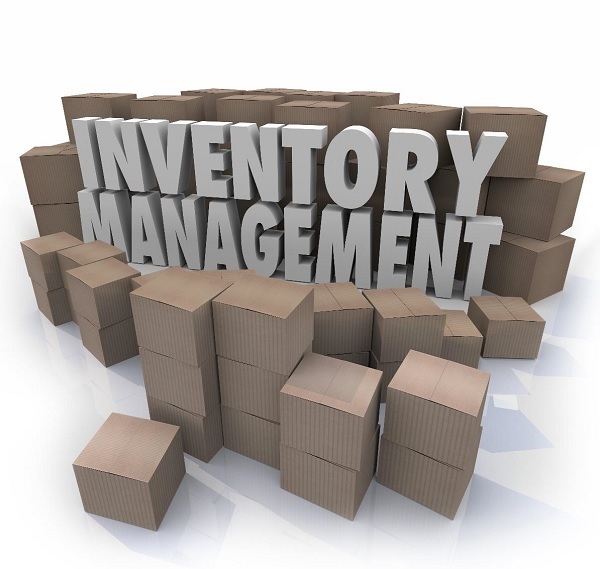
There are instances where efficiency in supply chain can be ensured by efficiencies in inventory, to be more precise, by maintaining efficiency in inventory reductions. Though inventory is considered a liability to efficient supply chain management, supply chain managers acknowledge the need of inventory. However, the unwritten rule is to keep inventory at a bare minimum.
Many strategies are developed with the objective of streamlining inventories beyond the supply chain and holding the inventory investment as low as possible. The supply chain managers tend to maintain the inventories as low as possible because of inventory investment. The cost or investment related with owning inventories can be high. These costs comprise the cash outlay that is necessary for purchasing the inventory, the costs of acquiring the inventories (the cost of having invested in inventories rather than investing in something else) and the costs related with managing the inventory.
Role of Inventory
Before understanding the role of inventory in supply chain, we need to understand the cordial relationship between the manufacturer and the client. Handling clients, coping up with their demands and creating relationships with manufacturer is a critical section of managing supply chains.
There are many instances where we see the concept of collaborative relationship being marked as the essence of supply chain management. However, a deeper analysis of supply chain relationships, especially those including product flows, exposes that at the heart of these relationships is inventory movement and storage.
More than half of it relies on the purchase, transfer or management of inventory. As we know, inventory plays a very important role in supply chains, being a salient feature.
The most fundamental functions that inventory has in supply chains are as follows −
- To supply and support the balance of demand and supply.
- To effectively cope with the forward and reverse flows in the supply chain.
Companies need to manage the upstream supplier exchanges and downstream customer demands. In this situation, the company enters a state where it has to maintain a balance between fulfilling the demands of customers, which is mostly very difficult to predict with precision or accuracy, and maintaining adequate supply of materials and goods. This balance can be obtained through inventory.
Optimization Models
Optimization models of supply chain are those models that codify the practical or real life issues into mathematical model. The main objective to construct this mathematical model is to maximize or minimize an objective function. In addition to this, some constraints are added to these issues for defining the feasible region. We try to generate an efficient algorithm that will examine all possible solutions and return the best solution in the end. Various supply chain optimization models are as follows −
Mixed Integer Linear Programming
The Mixed integer linear programming (MILP) is a mathematical modeling approach used to get the best outcome of a system with some restrictions. This model is broadly used in many optimization areas such as production planning, transportation, network design, etc.
MILP comprises a linear objective function along with some limitation constraints constructed by continuous and integer variables. The main objective of this model is to get an optimal solution of the objective function. This may be the maximum or minimum value but it should be achieved without violating any of the constraints imposed.
We can say that MILP is a special case of linear programming that uses binary variables. When compared with normal linear programming models, they are slightly tough to solve. Basically the MILP models are solved by commercial and noncommercial solvers, for example: Fico Xpress or SCIP.
Stochastic Modeling
Stochastic modeling is a mathematical approach of representing data or predicting outcomes in situations where there is randomness or unpredictability to some extent.
For example, in a production unit, the manufacturing process generally has some unknown parameters like quality of the input materials, reliability of the machines and competence within the employees. These parameters have an impact on the outcome of the manufacturing process but it is impossible to measure them with absolute values.
In these types of cases, where we need to find absolute value for unknown parameters, which cannot be measured exactly, we use Stochastic modeling approach. This modeling strategy helps in predicting the result of this process with some defined error rate by considering the unpredictability of these factors.
Uncertainty Modeling
While using a realistic modeling approach, the system has to take uncertainties into account. The uncertainty is evaluated to a level where the uncertain characteristics of the system are modeled with probabilistic nature.
We use uncertainty modeling for characterizing the uncertain parameters with probability distributions. It takes dependencies into account easily as input just like Markov chain or may use the queuing theory for modeling the systems where waiting has an essential role. These are common ways of modeling uncertainty.
Bi-level Optimization
A bi-level issue arises in real life situations whenever a decentralized or hierarchical decision needs to be made. In these types of situations, multiple parties make decisions one after the other, which influences their respective profit.
Till now, the only solution to solve bi-level problems is through heuristic methods for realistic sizes. However, attempts are being made for improving these optimal methods to compute an optimal solution for real problems as well.
SCM - Pricing & Revenue
Pricing is a factor that gears up profits in supply chain through an appropriate match of supply and demand. Revenue management can be defined as the application of pricing to increase the profit produced from a limited supply of supply chain assets.
Ideas from revenue management recommend that a company should first use pricing to maintain balance between the supply and demand and should think of further investing or eliminating assets only after the balance is maintained.
The assets in supply chain are present in two forms, namely capacity and Inventory
Capacity assets in the supply chain are present for manufacturing, shipment, and storage while inventory assets are present within the supply chain and are carried to develop and improvise product availability.
Thus, we can further define revenue management as the application of differential pricing on the basis of customer segment, time of use and product or capacity availability to increment supply chain surplus.
Revenue management plays a major role in supply chain and has a share of credit in the profitability of supply chain when one or more of the following conditions exist −
- The product value differs in different market segments.
- The product is highly perishable or product tends to be defective.
- Demand has seasonal and other peaks.
- The product is sold both in bulk and the spot market.
The strategy of revenue management has been successfully applied in many streams that we often tend to use but it is never noticed. For example, the finest real life application of revenue management can be seen in the airline, railway, hotel and resort, cruise ship, healthcare, printing and publishing.
RM for Multiple Customer Segments
In the concept of revenue management, we need to take care of two fundamental issues. The first one is how to distinguish between two segments and design their pricing to make one segment pay more than the other. Secondly, how to control the demand so that the lower price segment does not use the complete asset that is available.
To gain completely from revenue management, the manufacturer needs to minimize the volume of capacity devoted to lower price segment even if enough demand is available from the lower price segment to utilize the complete volume. Here, the general trade-off is in between placing an order from a lower price or waiting for a high price to arrive later on.
These types of situations invite risks like spoilage and spill. Spoilage appears when volumes of goods are wasted due to demand from high rate that does not materialize. Similarly, spill appears if higher rate segments need to be rejected due to the commitment of volume goods given to the lower price segment.
To reduce the cost of spoilage and spill, the manufacturer can apply the formula given below to segments. Let us assume that the anticipated demand for the higher price segment is generally distributed with mean of DH and standard deviation of σ H
CH = F-1(1-PL/PH, DH, σH) = NORMINV(1-PL/PH, DH, σH)
Where,
CH = reserve capacity for higher price segment
PL = the price for lower segment
PH = the price for higher segment
An important point to note here is the application of differential pricing that increments the level of asset availability for the high price segment. A different approach that is applicable for differential pricing is to build multiple versions of product that focus on different segments. We can understand this concept with the help of a real life application of managing revenue for multiple customer segments, that is, the airlines.
RM for Perishable Assets
Any asset that loses its value in due course of time is considered as a perishable item, for example, all fruits, vegetables and pharmaceuticals. We can also include computers, cell phones, fashion apparels, etc.; whatever loses its value after the launch of new model is considered as perishable.
We use two approaches for perishable assets in the revenue management. These approaches are −
- Fluctuate cost over time to maximize expected revenue.
- Overbook sales of the assets to cope or deal with cancellations.
The first approach is highly recommended for goods like fashion apparels that have a precise date across which they lose a lot of their value; for example, apparel designed for particular season doesn’t have much value in the end of the season. The manufacturer should try using effective pricing strategy and predict the effect of rate on customer demand to increase total profit. Here the general trade-off is to demand high price initially and allow the remaining products to be sold later at lower price. The alternate method may be charging lower price initially, selling more products early in the season and then leaving fewer products to be sold at a discount.
The second approach is very fruitful here. There are occurrences where the clients are able to cancel placed orders and the value of asset lowers significantly after the deadline.
RM for Seasonal Demands
One of the major applications of revenue management can be seen in the seasonal demand. Here we see a demand shift from the peak to the off-peak duration; hence a better balance can be maintained between supply and demand. It also generates higher overall profit.
The commonly used effective and efficient revenue management approach to cope with seasonal demand is to demand higher price during peak time duration and a lower price during off-peak time duration. This approach leads to transferring demand from peak to off-peak period.
Companies offer discounts and other value-added services to motivate and allure customers to move their demand to off-peak period. The best suited example is Amazon.com. Amazon has a peak period in December, as it brings short-term volume that is expensive and reduces the profit margin. It tempts customers through various discounts and free shipping for orders that are placed in the month of November.
This approach of reducing and increasing the price according to the demand of customers in the peak season generates a higher profit for various companies just like it does for Amazon.com.
RM for Bulk and Spot Demands
When we talk about managing revenue for bulk and spot demand, the basic trade-off is somewhat congruent to that of revenue management for multiple customer segments.
The company has to make a decision regarding the quantity of asset to be booked for spot market, which is higher price. The booked quantity will depend upon the differences in order between the spot market and the bulk sale, along with the distribution of demand from the spot market.
There is a similar situation for the client who tends to make the buying decision for production, warehousing and transportation assets. Here the basic tradeoff is between signing on long-term bulk agreement with a fixed, lower price that can be wasted if not used and buying in the spot market with higher price that can never be wasted. The basic decision to be made here is the size of the bulk contract.
A formula that can be applied to achieve optimal amount of the asset to be purchased in bulk is given below. If demand is normal with mean µ and standard deviation σ, the optimal amount Q* to be purchased in bulk is −
Q* = F-1(P*, μ, σ) = NORMINV(P*, μ, σ)
Where,
P* = probability demand for the asset doesn’t exceed Q*
Q* = the optimal amount of the asset to be purchased in bulk
The amount of bulk purchase increases if either the spot market price increases or the bulk price decreases.
We can now conclude that revenue management is nothing but application of differential pricing on the basis of customer segments, time of use, and product or capacity availability to increase supply chain profit. It comprises marketing, finance, and operation functions to maximize the net profit earned.
SCM - Integration
Supply chain integration can be defined as a close calibration and collaboration within a supply chain, mostly with the application of shared management information systems. A supply chain is made from all parties that participate in the completion of a purchase, like the resources, raw materials, manufacturing of the product, shipping of completed products and facilitating services.
There are different levels of supply chain integration. We will understand this with the help of an example of a computer manufacturing company. The initial step in integration shall include choosing precise merchants to supply certain inputs and ensuring compliance for them for supplying certain amount of inputs within the year at a set cost.
This assures that the company has the appropriate materials required to produce the expected output of computers during the year. In the meanwhile, this computer company may sign a bond with a large supplier of circuit boards; the bond expects it to deliver a precise quantity at precise times within a year and fix a price that will be effective during the bond year.
If we move to a higher level, the next step would be to integrate the companies more closely. The circuit board supplier may construct a plant close to the assembly plant and may also share production software. Hence, the circuit board company would be able to see how many boards are required in the upcoming month and can construct them in time, as the company requires them in order to meet its sales demand.
Further higher level is referred as vertical integration. This level starts when the supply chain of a company is actually owned by the company itself. Here, a computer company may buy the circuit board company just to ensure a devoted supply of elements.
Push System
In a push-based supply chain, the goods are pushed with the help of a medium, from the source point, e.g., the production site, to the retailer, e.g., the destination site. The production level is set in accordance with the previous ordering patterns by the manufacturer.
A push-based supply chain is time consuming when it has to respond to fluctuations in demand, which can result in overstocking or bottlenecks and delays, unacceptable service levels and product obsolescence.
This system is based on the deliberation of customer’s demand. It tries to push as many products into the market as possible. As a result, the production is time consuming because the producer and the retailer struggle to react to the changes in the market. Forecast or prediction plays an important role in the push system.
Optimum level of products can be produced through long term prediction. This deliberative nature of the push system leads to high production cost, high inventory cost as well as high shipment cost due to the company’s desire to halt products at every stage.
Thus, in the push view of supply chain integration, the manager of a firm may sometimes fail to satisfy or cope with the fluctuating demand pattern. This system leads to high inventory and high size of batches.
Here, the companies focus more on minimizing the cost of supply chain and neglect the responsiveness. This system models challenges along with demand management and transportation management.
Pull System
The pull-based supply chain is based on demand-driven techniques; the procurement, production and distribution are demand-driven rather than predicting. This system doesn’t always follow the make-to-order production. For example, Toyota Motors Manufacturing produces products yet do not religiously produce to order. They follow the supermarket model.
According to this model, limited inventory is kept and piled up as it is consumed. Talking about Toyota, Kanban cards are used to hint at the requirement of piling up inventory.
In this system, the demand is real and the company responds to the customer demands. It assists the company in producing the exact amount of products demanded by the clients.
The major drawback in this system is that in case the demand exceeds than the amount of products manufactured, then the company fails to meet the customer demand, which in turn leads to loss of opportunity cost.
Basically in the pull system, the total time allotted for manufacturing of products is not sufficient. The production unit and distribution unit of the company rely on the demand. From this point of view, we can say that the company has a reactive supply chain.
Thus, it has less inventories as well as variability. It minimizes the lead time in the complete process. The biggest drawback in pull based supply chain integration is that it can’t minimize the price by ranking up the production and operations.
Differences in Push and Pull System
The major differences between push and pull view in supply chain are as follows −
- In the push system, the implementation begins in anticipation of customer order whereas in the pull system, the implementation starts as a result of customer’s order.
- In the push system, there is an uncertainty in demand whereas in pull system, the demand remains certain.
- The push system is a speculative process whereas the pull system is a reactive process.
- The level of complexity is high in the push system whereas it is low in the pull system.
- The push based system concentrates on resources allocation whereas the pull system stresses on responsiveness.
- The push system has a long lead time whereas the pull system has a short lead time.
- The push system assists in supply chain planning whereas the pull system facilitates in order completion.
To conclude, the push based supply chain integrations works with an objective of minimizing the cost whereas the pull based supply chain integration works with an objective to maximize the services it provides.
Push & PUll System
Mostly we find a supply chain as merger of both push and pull systems, where the medium between the stages of the push-based and the pull-based systems is referred as the push–pull boundary.
The terms push and pull were framed in logistics and supply chain management, but these terms are broadly used in the field of marketing as well as in the hotel distribution business.

To present an example, Wal-Mart implements the push vs. pull strategy. A push and pull system in business represents the shipment of a product or information between two subjects. Generally, the consumers use pull system in the markets for the goods or information they demand for their requirements whereas the merchants or suppliers use the push system towards the consumers.
In supply chains, all the levels or stages function actively for the push and the pull system. The production in push system depends on the demand predicted and production in pull system depends on absolute or consumed demand.
The medium between these two levels is referred as the push–pull boundary or decoupling point. Generally, this strategy is recommended for products where uncertainty in demand is high. Further, economies of scale play a crucial role in minimizing production and/or delivery costs.
For example, the furniture industries use the push and pull strategy. Here the production unit uses the pull-based strategy because it is impossible to make production decisions on the basis on long term prediction. Meanwhile, the distribution unit needs to enjoy the benefits of economy of scale so that the shipment cost can be reduced; thus it uses a push-based strategy.
Demand-Driven Strategies
The demand-driven strategies were first developed to understand the impact of inactivity and collection, as information fertilizes the supply chain from the source of demand to the suppliers.
Within a mentioned supply lead time, normally the manufacturers manufacture sufficient goods to satisfy the needs of their clients predicted. But this is only somewhat accurate at the granular level at which inventory decisions are made.
Anyways, when the actual demand varies from the demand predicted, the first thing to be done is to adjust the supply levels needed in accordance with each step of the supply chain. But because of time delay between changing demands and its detection at several at points along the supply chain, its impact is amplified, resulting in inventory shortages or excesses.
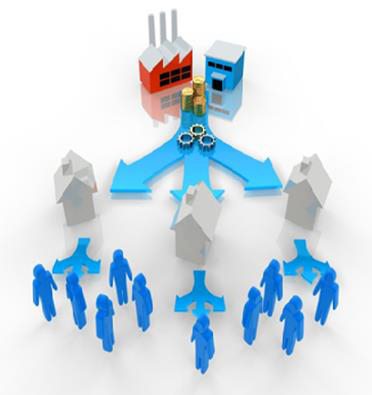
The inventory levels of the companies are disturbed because of the overcompensation done by the companies either by slowing down or speeding up production. These fluctuations prove to be a costly and inefficient affair for all participants.
Basically, the demand-driven strategies or the demand-driven supply chain is completely based on the demand as well as the supply part of marketing. So it can be uniquely organized in terms of the demand side and supply side initiatives.
The demand-side initiatives concentrate on efficient methods to acquire the demand signal closer to the source, observe the demand to sense the latest and most accurate demand signal and shape the demand by implementing and following promotional and pricing strategies to gear up demand in accordance with business objectives.
On the other hand, the supply side initiatives mostly need to do with reducing reliance on the prediction by developing into an agile supply chain accompanied by faster response when absolute demand is known.
All the strategies discussed above are addressed under the demand-driven strategy, but we a company following all of them is rare. In fact, we can conclude that companies concentrate on different markets on the basis of features of the market and industry.
SCM - Role of IT
Companies that opt to participate in supply chain management initiatives accept a specific role to enact. They have a mutual feeling that they, along with all other supply chain participants, will be better off because of this collaborative effort. The fundamental issue here is power. The last two decades have seen the shifting of power from manufacturers to retailers.
When we talk about information access for the supply chain, retailers have an essential designation. They emerge to the position of prominence with the help of technologies. The advancement of inter organizational information system for the supply chain has three distinct benefits. These are −
- Cost reduction − The advancement of technology has further led to ready availability of all the products with different offers and discounts. This leads to reduction of costs of products.
- Productivity − The growth of information technology has improved productivity because of inventions of new tools and software. That makes productivity much easier and less time consuming.
- Improvement and product/market strategies − Recent years have seen a huge growth in not only the technologies but the market itself. New strategies are made to allure customers and new ideas are being experimented for improving the product.
It would be appropriate to say that information technology is a vital organ of supply chain management. With the advancement of technologies, new products are being introduced within fraction of seconds increasing their demand in the market. Let us study the role of information technology in supply chain management briefly.
The software as well as the hardware part needs to be considered in the advancement and maintenance of supply chain information systems. The hardware part comprises computer's input/output devices like the screen, printer, mouse and storage media. The software part comprises the entire system and application program used for processing transactions management control, decision-making and strategic planning.
Here we will be discussing the role of some critical hardware and software devices in SCM. These are briefed below −
Electronic Commerce
Electronic commerce involves the broad range of tools and techniques used to conduct business in a paperless environment. Hence it comprises electronic data interchange, e-mail, electronic fund transfers, electronic publishing, image processing, electronic bulletin boards, shared databases and magnetic/optical data capture.
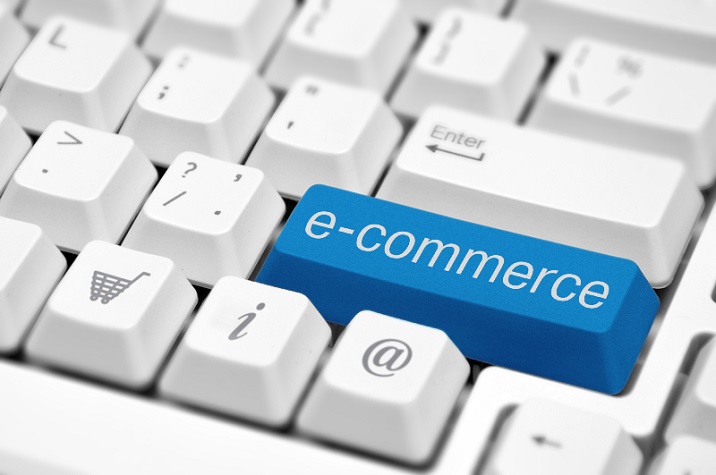
Electronic commerce helps enterprises to automate the process of transferring records, documents, data and information electronically between suppliers and customers, thus making the communication process a lot easier, cheaper and less time consuming.
Electronic Data Interchange
Electronic Data Interchange (EDI) involves the swapping of business documents in a standard format from computer-to-computer. It presents the capability as well as the practice of exchanging information between two companies electronically rather than the traditional form of mail, courier, & fax.
The major advantages of EDI are as follows −
- Instant processing of information
- Improvised customer service
- Limited paper work
- High productivity
- Advanced tracing and expediting
- Cost efficiency
- Competitive benefit
- Advanced billing
The application of EDI supply chain partners can overcome the deformity and falsehood in supply and demand information by remodeling technologies to support real time sharing of actual demand and supply information.
Barcode Scanning
We can see the application of barcode scanners in the checkout counters of super market. This code states the name of product along with its manufacturer. Some other practical applications of barcode scanners are tracking the moving items like elements in PC assembly operations and automobiles in assembly plants.

Data Warehouse
Data warehouse can be defined as a store comprising all the databases. It is a centralized database that is prolonged independently from the production system database of a company.
Many companies maintain multiple databases. Instead of some particular business processes, it is established around informational subjects. The data present in data warehouses is time dependent and easily accessible. Historical data may also be accumulated in data warehouse.
Enterprise Resource Planning(ERP) Tools
The ERP system has now become the base of many IT infrastructures. Some of the ERP tools are Baan, SAP, PeopleSoft. ERP system has now become the processing tool of many companies. They grab the data and minimize the manual activities and tasks related to processing financial, inventory and customer order information.
ERP system holds a high level of integration that is achieved through the proper application of a single data model, improving mutual understanding of what the shared data represents and constructing a set of rules for accessing data.
With the advancement of technology, we can say that world is shrinking day by day. Similarly, customers' expectations are increasing. Also companies are being more prone to uncertain environment. In this running market, a company can only sustain if it accepts the fact that their conventional supply chain integration needs to be expanded beyond their peripheries.
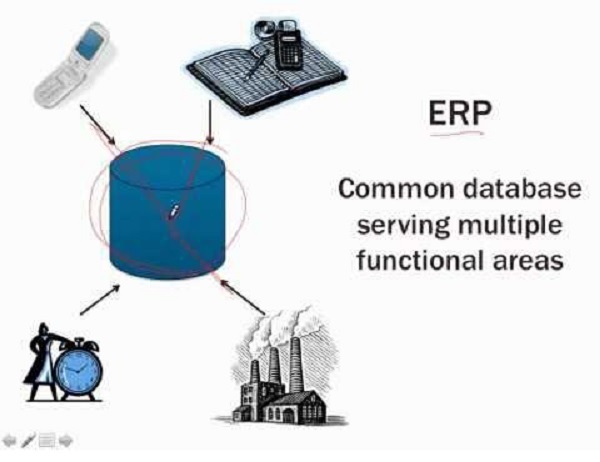
The strategic and technological interventions in supply chain have a huge effect in predicting the buy and sell features of a company. A company should try to use the potential of the internet to the maximum level through clear vision, strong planning and technical insight. This is essential for better supply chain management and also for improved competitiveness.
We can see how Internet technology, World Wide Web, electronic commerce etc. has changed the way in which a company does business. These companies must acknowledge the power of technology to work together with their business partners.
We can in fact say that IT has launched a new breed of SCM application. The Internet and other networking links learn from the performance in the past and observe the historical trends in order to identify how much product should be made along with the best and cost effective methods for warehousing it or shipping it to retailer.
SCM - Agile and Reverse
In this chapter, we will throw some light on two specialized supply chains −
- Agile Supply Chain
- Reverse Supply Chain
Agile Supply Chain
An agile supply chain can be defined as a chain of supply that has the potential to respond to changing requirements in a way that accelerates the delivery of ordered goods to customers.
In simple words, supply chain agility is a custom adopted by many companies for choosing a dealer. As we know, a supply chain with flexibility and the ability to quickly react to emergency requirements can help the business answer more efficiently to its customers. Apart from flexibility, speed and accuracy are also signature marks of this type of supply chain.
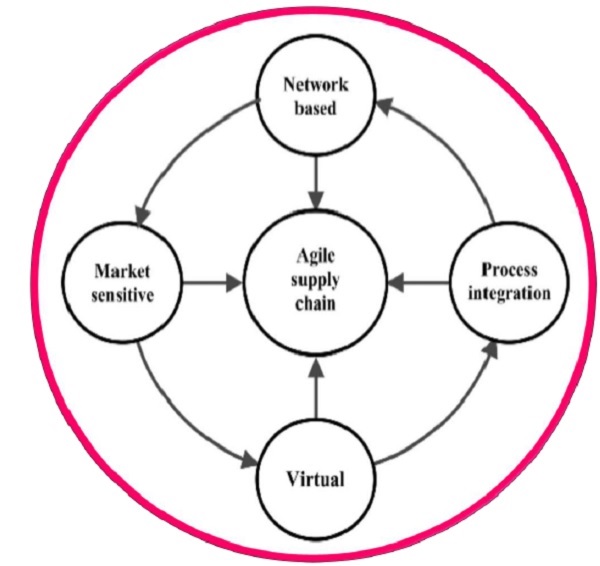
To acknowledge the advantages of an agile supply chain, we have to learn about the elements of any type of supply chain. These include elements like collection of orders and processing, supply of materials to create the goods used to complete orders, packaging and transport of finished goods, and the quality of customer service that is advertised throughout the process from the point of sale to the actual delivery and beyond.
Thus, for considering the functions of supply chain as agile, each one of these elements must be managed efficiently and coordinated in such a way that makes it possible to adapt to changing circumstances.
With the help of an agile supply chain, merchants can easily respond to the varying requirements of customer with relatively less time required. For example, if a client has already placed a sizable order but demands the product to be delivered few days prior to the projected delivery date, a merchant with a truly agile supply chain can easily accommodate that change in the client’s situation, at least in part. Working collaboratively, the merchant and the customer develop a strategy to permit the delivery of as much of the order as possible within the new time frame required.
There are times when merchants need to think creatively along with some flexibility in terms of scheduling production time, selecting shippers and basically looking closely at each step in the order completion process to search for ways to reduce the time required to successfully accomplish those tasks and abide with the customer’s request.
Reverse Supply Chain
Reverse supply chain states the evolution of products from customer to merchant. This is the reverse of the traditional supply chain evolution of products from merchant to customer.
Reverse logistics is the process of planning, executing, monitoring and controlling the efficient and effective inbound flow and storage of secondary goods and information related to the purpose of recovering value or proper disposal. Some examples of reverse supply chain are as follows −
- Product returns and handling product displacement.
- Remanufacturing and refurbishing exercises.
- Management and sale of surplus, along with returned equipment and machines from the hardware leasing business.
Different types of reverse supply chain arise at different stages of the product cycle. Mostly reverse supply chain is designed to carry out the below given five key processes −
- Product acquisition − Accumulating the used product from the user by the reseller or manufacturer because of some manufacturing defect or some other reason. It is basically considered as a company’s growth strategy.
- Reverse logistics − Shipping of products from their final destination for auditing, sorting and disposition.
- Inspection and disposition − Examining the condition of the product returned along with making the most profitable decision for reusing it in some other way.
- Remanufacturing or refurnishing − Returning the product to its original source from where it was ordered in the very first place along with specifications. This is done basically when there is a manufacturing or furnishing defect in the goods.
- Marketing − Establishing secondary markets for the goods that have been recovered by the merchant from the client who initially ordered it in the beginning but chose to return it.
In short, we can say that the enterprises that closely coordinate with their forward supply chains are the one that have been most successful with their reverse supply chains. These two chains create a closed-loop system. For example, the company designs a product layout according to the manufacturing decisions followed by recycling and reconditioning. Bosch is a beautiful example of reverse supply chain. It constructs sensors into the motors of its power tools, which signs if the motor is worth reconditioning.
Technology plays a great role here by reducing the inspection and disposition costs, sanctioning the company to make a profit on the remanufactured tools. In fact, along with reverse supply chains, forward thinking results in big dividends.

I just want to say I’m new to weblog and certainly savored this page. You actually have outstanding well written articles. Cheers for sharing with us your website.
ReplyDeleteProcurement Management Software
Purchase Management Software
e Procurement Management Software
Procurement Tracking Software
Great post!! This can be one particular of the most useful blogs We’ve ever arrive across on this subject. Basically Wonderful. I am also a specialist in this topic so I can understand your hard work.
ReplyDeleteProcurement Management Software
Procurement Management Software India
Procurement Management Software Chennai
e Procurement Management Software
Wow what a great blog, i really enjoyed reading this, good luck in your work. Purchasing Planning Pdf
ReplyDeleteGreat Article!!! Keep sharing more blogs like this!!
ReplyDeleteFretron provides logistics management system which helps businesses to manage the various processes that go into the production cycle from the delivery of raw material.
Your content is really helpful,We have also website for six sigma certifications Please check.
ReplyDeleteEnroll in ISEL Global Education for six sigma certification.
Thanks for sharing. Especia Associates is one of the leading Financial Advisors & Consultants company in India. Outsourcing Accounting companies get to focus on their offerings while delegating routine tasks to third parties. So in today's world, where everyone wants more benefits in less time and cost, virtual accounting services are another innovation for making the accounts of your company easily managed. If you need Outsource Accounting Services call 9310165114 or visit us Virtual Accounting Services
ReplyDeleteFreight Audit Software: Fretron’s freight audits & payments help streamline audit-ready claim handling and management for faster settlements and reconciliation. Leverage intelligent workflows to automate your invoice generation and share it with vendors based on their specific payment cycles.
ReplyDeleteI hope this post will help you have to provide better information to everyone. Keep write
ReplyDeleteRegards,
Break Bulk Cargo Services in Chennai - Herald Wls
Great Post! Thanks for sharing such amazing information with us. Please keep sharing.
ReplyDeleteecommerce fulfillment platform
This comment has been removed by the author.
ReplyDeleteGreat content... it's very informative!! Read our latest blog post.. & know What is Freight Audit In Logistics
ReplyDeleteDiscover Reliable Accountant Services in Surat: Navigate the realm of financial management with expert accountant services in Surat. Our seasoned professionals offer comprehensive financial solutions tailored to your individual or business needs. From meticulous bookkeeping and accurate tax preparation to strategic financial planning, our dedicated team ensures precision and compliance every step of the way.
ReplyDeleteNice post
ReplyDeleteBreaker Bar
Elevate your supply chain performance with Knowledgetics Research, a leading player among supply chain consulting companies. Our team of experts brings a wealth of industry knowledge and strategic insights to the table, helping businesses of all sizes achieve sustainable growth and competitive advantage. Trust Knowledgetics Research to deliver innovative solutions tailored to your unique needs and drive lasting success in the ever-evolving world of supply chain management.
ReplyDelete